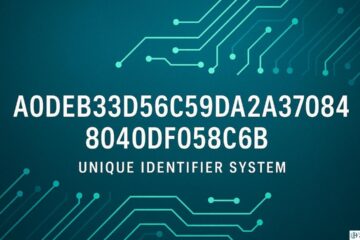In the field of cryptography, the Diffie-Hellman key exchange is a fundamental protocol that allows two parties to securely establish a shared secret key over an insecure communication channel. This article provides a comprehensive understanding of the Diffie-Hellman key exchange, including its principles, step-by-step process, security properties, real-world examples, and a comparison with other cryptographic algorithms.
What Is the Diffie-Hellman Key Exchange?
The Diffie-Hellman (DH) key exchange, named after its inventors Whitfield Diffie and Martin Hellman, is a method of securely exchanging cryptographic keys over an insecure communication channel. It provides a way for two parties to agree on a shared secret key without explicitly transmitting it. This shared key can then be used to encrypt and decrypt messages, ensuring confidentiality.
How the Diffie-Hellman Key Exchange Works
Step 1: Setup
The key exchange begins with the setup phase, where the two parties, Alice and Bob, agree on public parameters:
- Prime number (p): A large prime number that serves as the modulus.
- Base (g): A number relatively prime to p, which acts as the generator.
pythonCopy code# Example parameters
p = 23
g = 5
Step 2: Private Key Generation
Both Alice and Bob generate their private keys:
- Alice chooses a random secret number a.
- Bob chooses a random secret number b.
pythonCopy codeimport random
# Alice's private key
a = random.randint(1, p - 1)
# Bob's private key
b = random.randint(1, p - 1)
Step 3: Public Key Calculation
Using their private keys and the agreed-upon parameters (p and g), Alice and Bob calculate their respective public keys:
- Alice calculates A = g^a mod p.
- Bob calculates B = g^b mod p.
pythonCopy code# Alice's public key
A = pow(g, a, p)
# Bob's public key
B = pow(g, b, p)
Step 4: Key Exchange
Alice and Bob exchange their public keys (A and B) over the insecure channel.
pythonCopy code# Alice receives Bob's public key
received_B = B
# Bob receives Alice's public key
received_A = A
Step 5: Shared Secret Calculation
Using their own private keys and the received public key, both Alice and Bob independently compute the shared secret key:
- Alice calculates s = received_B^a mod p.
- Bob calculates s = received_A^b mod p.
pythonCopy code# Alice calculates the shared secret key
shared_secret_A = pow(received_B, a, p)
# Bob calculates the shared secret key
shared_secret_B = pow(received_A, b, p)
Step 6: Shared Secret Utilization
Alice and Bob now possess the same shared secret key s. This key can be used for symmetric encryption algorithms to securely encrypt and decrypt their messages.
pythonCopy code# The shared secret key
shared_secret_A == shared_secret_B # True
Why Use the Diffie-Hellman Key Exchange?
The Diffie-Hellman key exchange offers several advantages that make it a preferred choice in many cryptographic applications:
- Key Exchange Security: Diffie-Hellman provides a secure method for exchanging secret keys over an insecure channel, ensuring confidentiality.
- Forward Secrecy: Even if private keys are compromised in the future, previously exchanged messages remain secure.
- Efficient Key Establishment: Diffie-Hellman is computationally efficient, making it an efficient method for establishing shared secret keys.
- Flexibility and Scalability: It allows customization of parameters based on security requirements, adapting to different key sizes and computational resources.
- Wide Range of Applications: Diffie-Hellman is widely used in secure communication protocols (TLS, SSH) and VPNs.
The Diffie-Hellman key exchange provides secure key exchange, forward secrecy, efficiency, flexibility, and has a broad range of applications in modern cryptography.
Security Properties of Diffie-Hellman
The Diffie-Hellman key exchange offers important security properties:
- Secure Key Exchange: The Diffie-Hellman protocol allows secure key exchange without transmitting the shared secret key explicitly.
- Forward Secrecy: Even if an attacker compromises the private keys in the future, previously exchanged messages remain secure.
- Computational Security: The difficulty of computing the private key from the public keys provides computational security.
Real-World Examples of Diffie-Hellman
The Diffie-Hellman key exchange is widely used in various cryptographic protocols and systems:
- Secure Communication: Diffie-Hellman is employed in secure communication protocols like Transport Layer Security (TLS) and Secure Shell (SSH) to establish secure connections over the internet.
- Virtual Private Networks (VPNs): Many VPN implementations utilize Diffie-Hellman to establish secure tunnels between clients and servers.
- Key Agreement Protocols: Diffie-Hellman forms the basis for key agreement protocols such as the Station-to-Station (STS) protocol and the Internet Key Exchange (IKE) protocol used in IPsec.
Diffie-Hellman vs. Other Cryptographic Algorithms
| Algorithm | Purpose | Key Exchange | Encryption/Decryption | Digital Signatures |
|---|---|---|---|---|
| Diffie-Hellman | Key Exchange | Yes | No | No |
| RSA | Encryption/Signatures | No | Yes | Yes |
| Elliptic Curve Cryptography (ECC) | Key Exchange/Encryption/Signatures | Yes | Yes | Yes |
Diffie-Hellman is primarily used for key exchange, while RSA and ECC are employed for encryption, decryption, and digital signatures.
Wrapping Up: The Importance of Diffie-Hellman
The Diffie-Hellman key exchange revolutionized the field of cryptography by providing a secure method for two parties to establish a shared secret key over an insecure channel. Its mathematical principles and real-world applications have made it an essential component of modern cryptographic systems. Understanding the basics of the Diffie-Hellman key exchange helps us appreciate the significance of secure communication and highlights the critical role that cryptography plays in protecting our digital transactions and information.
FAQs
Can the parameters in the Diffie-Hellman key exchange be customized?
Yes, the parameters, such as the prime number and base, can be chosen based on the desired level of security, making Diffie-Hellman flexible and adaptable.
How does the Diffie-Hellman key exchange ensure security?
The security of Diffie-Hellman relies on the computational difficulty of solving the discrete logarithm problem, which makes it hard for attackers to compute the shared secret key from the exchanged public keys.
What is the advantage of forward secrecy in the Diffie-Hellman key exchange?
Forward secrecy ensures that even if private keys are compromised, previously exchanged messages remain secure, providing an additional layer of protection.
Why are wide applications of Diffie-Hellman beneficial?
Wide applications of Diffie-Hellman make it a versatile solution for secure key exchange in various protocols and systems, ensuring secure communication in different scenarios.
See Also: What Is the OSI Model? A Simple Explanation of the 7 Layers










